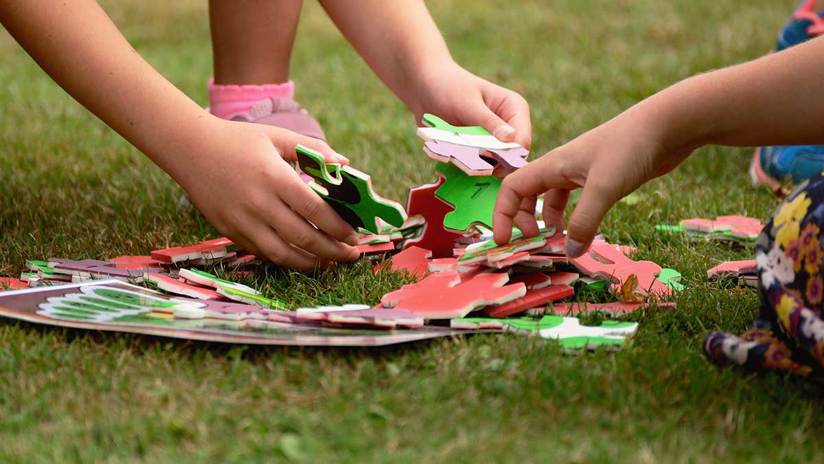Puzzles are a fascinating pastime for young and old. It is not only fun but also positively changes our thought processes.
When even the youngest children engage in puzzles, they're fine motor and cognitive skills are trained. Find out from what age puzzles make sense, which different puzzle games there are, and what else can be done with the puzzle material.
From what age can children start doing puzzles?
The puzzle adventure can begin for your child between 12 and 18 months - depending on their individual development in the areas of visual perception and fine motor skills. Observe your child and ask yourself the following questions:
- Can your child consciously reach for things?
- Does he use the so-called tweezer grip, i.e. does he pick up objects with his thumb and index finger and turn them back and forth?
- Can he recognize and distinguish shapes?
If you can answer yes to all these questions, your child is the right age to be introduced to the exciting world of puzzles. However, interest in puzzles cannot be forced. Rather, the motivation should always come from your child.
From what age does it make sense to do puzzles with toddlers?
The best way for toddlers to start playing jigsaw puzzles is with so-called "grip puzzles" - wooden jigsaw puzzles with a handle, in which a picture is to be completed using only a few, easy-to-grip puzzle pieces - or so-called wooden frame puzzles, in which mostly colorful motifs or larger wooden puzzle pieces are to be put together to form a picture. Here, puzzles train fine motor skills and sharpen the sense of shapes. It is important to note, however, that toddlers can usually only concentrate on puzzles for a short time. It is therefore very helpful if a parent supports the puzzle beginner during the game.
What do children learn through puzzles?
When doing puzzles, children train their fine motor skills, improve their eye-hand coordination, and practice concentration and patience. They learn how to solve problems through strategy and structure - here by repeatedly sorting puzzle pieces. Also, children recognize fitting shapes and colors better through puzzles. Their ability to concentrate and their memory, especially short-term memory, also increase. Perseverance and frustration tolerance are also trained. So children's puzzles have countless positive effects on manual skills, cognitive development, and visual perception. And not to forget: At the end, the diligent puzzlers are rewarded with a beautiful final motif, and they are happy about their success. So puzzling keeps you mentally fit and makes you happy!
What are the different types of puzzles for children?
There is a great variety of puzzles. On the one hand, puzzles are differentiated according to their material and the motifs are shown, and on the other hand, according to their degree of difficulty. As a general rule, the difficulty of a puzzle increases with the age of the child. This is made up of several factors: the number and size of the pieces, the level of detail of a picture and its coloring as well as the quality. There are puzzles made of wood or cardboard, and the degree of difficulty varies depending on the shape, thickness, and flexibility of the pieces. A higher number of puzzle pieces, smaller puzzle shapes with more difficult contours, and more detailed motifs make it more difficult to put the individual pieces together and make the puzzle more tricky overall.
